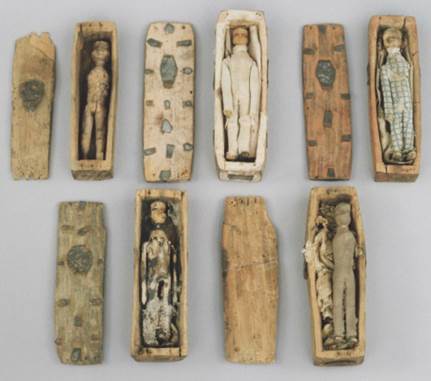| This Week’s Topic… | |||

Best viewed in
|
The Miniature Coffins of Arthur's Seat
In 1836, while hunting rabbits on the slopes of "Arthur's Seat" (left) a group of boys are said to have discovered a small cave that was hidden behind three slabs of slate when their dog disappeared into a hollow. Within the cave they found a cache of seventeen toy-sized coffins measuring about 9.5 centimeters (3.75 inches) in length. They were carved from pine and decorated with tinned iron fittings. Each coffin contained a carved wooden figure that was dressed in what appeared to be male clothing that had been stitched around and glued to the figure along with painted-on black boots. Some of the figures appear to have missing arms and that their coffin was carved to fit them as-is without the missing limbs -suggesting that they may not have originally been carved with the intension of being entombed in the coffins. Their eyes are also open, suggesting they were not originally designed as corpses. There are only
eight examples that have survived to the present day. Some of the
missing ones were originally said to have been "destroyed by the
boys pelting them at each other as unmeaning and contemptible trifles”
according to an article in The Scotsman, 16 July 1836. Others
seem to have simply fallen apart and disintegrated over the decades
while they were held in private hands. The figures appear to be the work
of one or two people based on the style.
|
||


